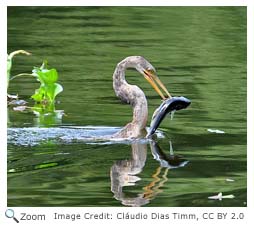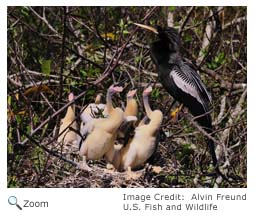Anhinga - Anhinga anhinga |
||||||||||
Description Range | HabitatThe anhinga is found in freshwater ponds, lakes, rivers and swamps where there is thick vegetation and tall trees. Diet Life CycleThe male anhinga courts the female by flying and gliding overhead. The male chooses a nesting site. Once a pair has formed, the male gathers sticks, leaves, and twigs for the nest. The female uses the materials the male gathers to build a platform nest in a tree. The nest is built 4-20 feet above the ground or water. BehaviorThe anhinga is also known as the snakebird. When it swims, its body is submerged under the water. It stretches its head and neck flat out on the surface of the water. When its head and neck are stretched out, it looks like a snake is gliding through the water. |
|||||||||
Audio Credit: xeno-canto.org Miguel Angel Roda |
||||||||||


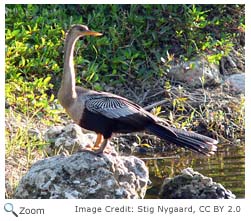
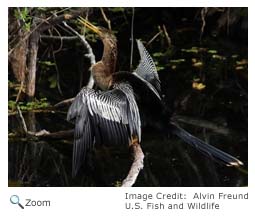
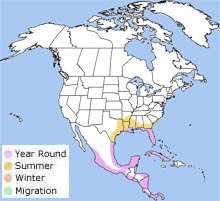 The anhinga is found off the Gulf Coast and the Atlantic Coast from North Carolina to Texas and in the Mississippi Valley north to Kentucky and Missouri. It is also found in Central America, South America, and the Caribbean.
The anhinga is found off the Gulf Coast and the Atlantic Coast from North Carolina to Texas and in the Mississippi Valley north to Kentucky and Missouri. It is also found in Central America, South America, and the Caribbean.
